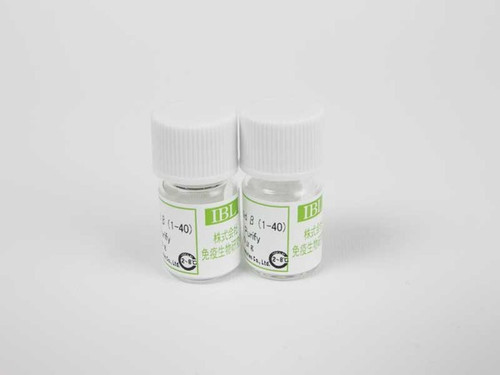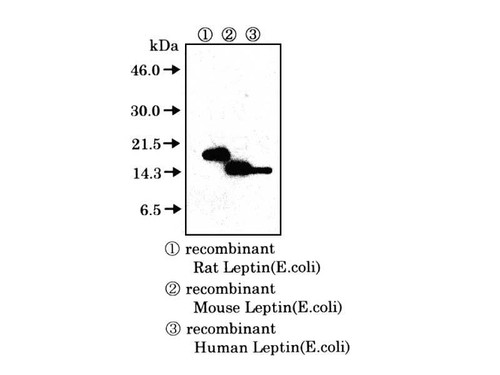The recessive obesity mutation, ob, identified in 1950, results in profound obesity and type II diabetes as part of a syndrome that resembles morbid obesity in humans. Freidman’s group at Rockefeller University originally identified the obesity gene that encodes for Leptin in 1994. Leptin is a 16 kDa secreted protein produced by the ob gene. Adipose tissue produces Leptin and releases it into the bloodstream. As fat deposits grow, blood Leptin level tends to increase. It has been suggested that Leptin acts as a lipostat, increasing as fat gets deposited into adipocytes. It is also found that the protein acts as a hormone instructing the brain to stop food consumption and to increase activity. The protein has also been shown to signal and probably control the onset of puberty. In addition, recent study shows Leptin acts as a potent inhibitor of bone formation through central nervous system. For research use only, not for use in diagnostic procedures.
- application:
- WB
- Catalog number:
- 18547-S
- Datasheet:
- formulation:
- Lyophilized product from 1% BSA in PBS containing 0.05% NaN3
- immunogen:
- Synthetic peptide in portion of C-terminus of Mouse Leptin
- MSDS:
- notes:
- For research use only, not for use in diagnostic procedures.
The datasheet for this product (see above) is intended to serve as an example only. Please refer to the datasheet provided with the antibody for precise details. - Other names:
- Please see datasheet
- Protocol:
- purification:
- Purified with antigen peptide
- size:
- 10 µg
- specificity:
- Cross-reacts with Rat
- storage:
- Lyophilized product, 5 years at 2 - 8 °C; Solution, 2 years at -20 °C
- Species:
- Mouse
- Host:
- Rabbit







